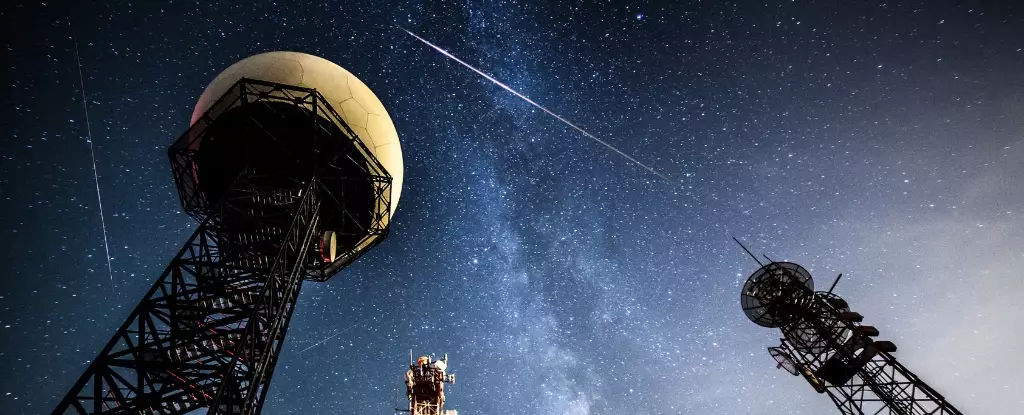Summer isn’t just about beach trips and barbecues; it’s an unparalleled season for stargazing, offering an extraordinary opportunity to witness breathtaking meteor showers. During the latter half of July and early August, the night sky transforms into a grand theater of shooting stars. This period is especially enticing because three major meteor showers—each with its distinct charm—reach their peak. The season’s warm evenings in the Northern Hemisphere create perfect conditions to gaze upward, while in the Southern Hemisphere, elongated nights extend the window for celestial observation. This convergence of timing and favorable weather turns stargazing into an immersive experience that invites both seasoned skywatchers and casual observers to indulge their sense of wonder.
Understanding the Cosmic Origins of Meteor Showers
Meteor showers are more than fleeting streaks of light; they are the remnants of cosmic debris left in Earth’s path over millennia. As our planet orbits the Sun, it encounters clouds of dust and remnants shed by comets and some asteroids, which have been orbiting the Sun for centuries. When Earth plunges into these debris fields, fragments collide with our atmosphere at mind-blowing speeds, igniting into the captivating flashes we call shooting stars. The spectacular displays are a glimpse into the ongoing relationship between Earth and these ancient visitors from the solar system. While some meteor showers are gentle, others can be surprisingly intense, illuminating the night with bright fireballs that leave a lasting impression.
The Alpha Capricornids: Bright Sparks in a Sparse Show
Among the meteor showers lighting up the summer sky, the Alpha Capricornids stand out for their brightness, despite their modest frequency. Originating from the short-period comet 169/NEAT, this shower’s meteors are relatively sparse—peaking at about five per hour—but each one is a luminous spectacle, often outshining many others. Their radiant point in the constellation of Capricorn provides a southern but accessible target for observers. Notably, the current year’s slim crescent Moon minimizes sky glow, making it easier to see even the faintest meteors. The optimal viewing window begins late in the evening, around 10 p.m., when the sky is dark enough to appreciate these dazzling streaks. The unique beauty of the Alpha Capricornids lies in their brightness, making them a favored choice for viewers willing to wait for that rare moment of luminous brilliance amidst a sleepy starfield.
The Perseids: The Season’s Showstopper
The Perseids are, without question, the crown jewel of summer meteor showers. Originating from Comet Swift-Tuttle—an ancient, periodic visitor that orbits the Sun every 133 years—they generate a dramatic display of up to 75 meteors per hour under ideal dark sky conditions. Their radiant, situated near Perseus, lends the shower its name and makes it highly recognizable. The Perseids are famous for their speed and vivid trails, often leaving lingering streaks across the night sky. Although this year’s bright waxing gibbous Moon might interfere slightly with the viewing experience, the shower’s broad activity window in August offers ample opportunities to see these celestial flashes. The best viewing time is in the pre-dawn hours, just before sunrise, when the sky is darkest and the chance of catching a spectacular fireball is greatest. Witnessing the Perseids is like participating in a ritual of cosmic renewal—an awe-inspiring reminder of the universe’s vastness and dynamic beauty.
The Southern Delta Aquariids: The Hidden Gem with Surprises
While the Perseids often steal the spotlight, the Southern Delta Aquariids deserve recognition for their unique characteristics and potential for surprises. Originating from comet 96P/Macholz, these meteors are generally fainter, producing 20-25 streaks per hour during their peak. Their radiant point in Aquarius makes them an ideal target for viewers in the Southern Hemisphere, though northern observers can get glimpses with patience. Interestingly, their performance can be unpredictable; historical instances in 1977 and 2003 saw these meteors exploding into remarkable displays far beyond expectations. The upcoming peak coincides with the early phase of the Moon, presenting optimal conditions for observations. To fully embrace this hidden treasure, stargazers are encouraged to prepare with equipment such as binoculars or sky apps, tracking the radiant’s position and timing each peak. It’s in these lesser-known showers that one might witness some of the most unexpected and awe-inspiring moments of the summer sky.
The Joys of Sky-Watching and How to Make It Memorable
Enjoying these meteor showers is accessible to anyone, requiring nothing more than clear skies and patience. However, strategic preparation can elevate the experience into a cherished memory. Downloading star-gazing applications like Star Walk or Stellarium can help you identify constellations and anticipate the radiant points of each shower, increasing your chances of witnessing those fleeting fireballs. Comfortable seating, warm blankets, and hot drinks turn a simple night under the stars into a cozy adventure. Bringing a camera with long-exposure capabilities offers the chance to capture the fleeting beauty of shooting stars, transforming ephemeral moments into lasting images. Remember, the best way to see meteors is to relax, look upward, and allow yourself to be immersed in the universe’s silent, infinite spectacle.
In the dynamic dance of celestial debris crossing our night sky, these meteor showers are more than just light shows—they are a call to reconnect with the universe. Summertime’s warm evenings make this cosmic ballet not merely observable but profoundly enjoyable, offering a rare chance to witness the universe’s grandeur firsthand. So, gather your friends and family, prepare your viewing spot, and embrace the awe-inspiring beauty that summer’s meteor showers deliver—an experience that stirs the soul and ignites the imagination.

